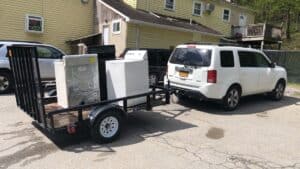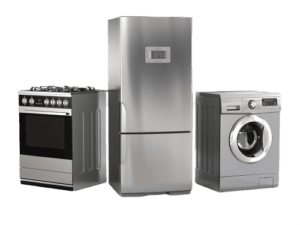An oven that refuses to heat up can be a major inconvenience, especially when you’re in the middle of preparing a meal. Understanding why your oven isn’t heating properly is crucial for getting it back into good working order. There can be several reasons for this issue, and this post will explore the common causes and potential solutions to help you troubleshoot effectively.
1. Check the Power Source
The first thing you should do when your oven won’t heat is to check the power source. For electric ovens, ensure that it’s properly plugged in. Sometimes, the plug can loosen or disconnect, cutting off power. If your oven is hardwired into your home’s electrical system, check your circuit breaker or fuse box for any tripped breakers or blown fuses. Resetting the breaker or replacing the fuse could restore power to the oven.
2. Over-temperature Safety Mechanism
Most modern ovens have an over-temperature or thermal fuse that prevents the oven from overheating. If this fuse blows, the oven will stop heating. If you suspect this is the case, you may need to consult your owner’s manual for instructions on locating the thermal fuse, then you can test it with a multimeter to see if it has continuity. If it appears to be faulty, replacing the thermal fuse could be necessary.
3. Faulty Heating Elements
The heating elements in your oven can become worn or damaged over time. If you have an electric oven, it may have both a bake element and a broil element. To check if either element is faulty and needs replacement, visually inspect them for any signs of blistering or breaks. For a more thorough test, you can use a multimeter to check for continuity. If the heating element fails the test, it will need to be replaced.
4. Defective Igniter
For gas ovens, a defective igniter can be the source of the heating issue. The igniter is responsible for lighting the gas that heats the oven. If it’s failing, it may not produce sufficient heat to ignite the gas. If you hear clicking sounds and smell gas, but the burner does not ignite, the igniter likely needs replacement. It’s essential to handle repairs involving gas carefully, so if you’re unsure, it might be best to contact a professional technician.
5. Malfunctioning Thermostat
The thermostat controls the oven temperature by regulating the heat produced. If the thermostat is faulty, it may not signal the heating elements to turn on. An oven that won’t reach the desired temperature might be struggling due to an inaccurate reading from a faulty thermostat. Testing and recalibrating the thermostat can sometimes resolve the issue, but replacing it may be necessary if it no longer functions correctly.
6. Control Board Issues
For modern ovens, the control board manages various functions, including temperature settings and timers. If there’s an electrical fault or an issue with the control board, it can prevent the oven from heating properly. Diagnosing control board problems can be complex, and in many cases, it requires the expertise of a qualified technician to assess and repair.
What to Do Next?
If your oven is not heating up, start by methodically checking each component as described above. In many cases, the issue can be resolved through simple inspections and replacements of faulty parts. However, if you’re unsure or uncomfortable working with electrical components or gas lines, it’s always wise to contact a professional appliance repair service like Hudson Appliance Repair to assess and fix the situation safely and effectively.
By understanding these potential problems, you can troubleshoot your oven more effectively and enjoy the convenience of a fully functional appliance. Don’t hesitate to reach out for expert help, we’re here to make cooking easier and safer for you!




